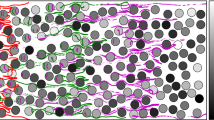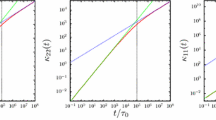Abstract
In [1] an average model of the trapping process interpreted as a phase transition with intrinsic kinetic time was proposed. The structure of the kinetic coefficients was revealed for the simplest model of a porous medium in the form of a system of doublets. The limitations of the doublet model include both the simplified determination of the velocity field and the obligatory formation of a trap when water travels through a doublet. The effective medium variant proposed below is a more complicated model of the medium which makes it possible to describe the macrokinetics of trapping. This variant, designated the cyclic effective medium model, differs from the classical variant [2] in that it makes it possible to describe unsteady transport processes. The cyclic effective medium model permits the description of new qualitative regularities of the trapping process.
Similar content being viewed by others
References
M. B. Panfilov, “Macrokinetic model of the trapping process in the two-phase displacement of fluids in a porous medium,”Izv. Ros. Akad. Nauk, Mekh. Zhidk. Gaza, No. 3 (1995) (in press).
M. I. Shvidler,Statistical Hydrodynamics of Porous Media [in Russian], Nedra, Moscow (1985).
S. Kirkpatrick, “Percolation and conduction”,Rev. Modern Phys.,45, 574 (1973).
Additional information
Moscow. Translated from Izvestiya Rossiiskoi Akademii Nauk, Mekhanika Zhidkosti i Gaza, No. 2, pp. 92–98, March–April, 1995.
Rights and permissions
About this article
Cite this article
Panfilov, M.B. Macrokinetics of trapping in the cyclic effective medium model. Fluid Dyn 30, 231–237 (1995). https://doi.org/10.1007/BF02029835
Received:
Issue Date:
DOI: https://doi.org/10.1007/BF02029835




